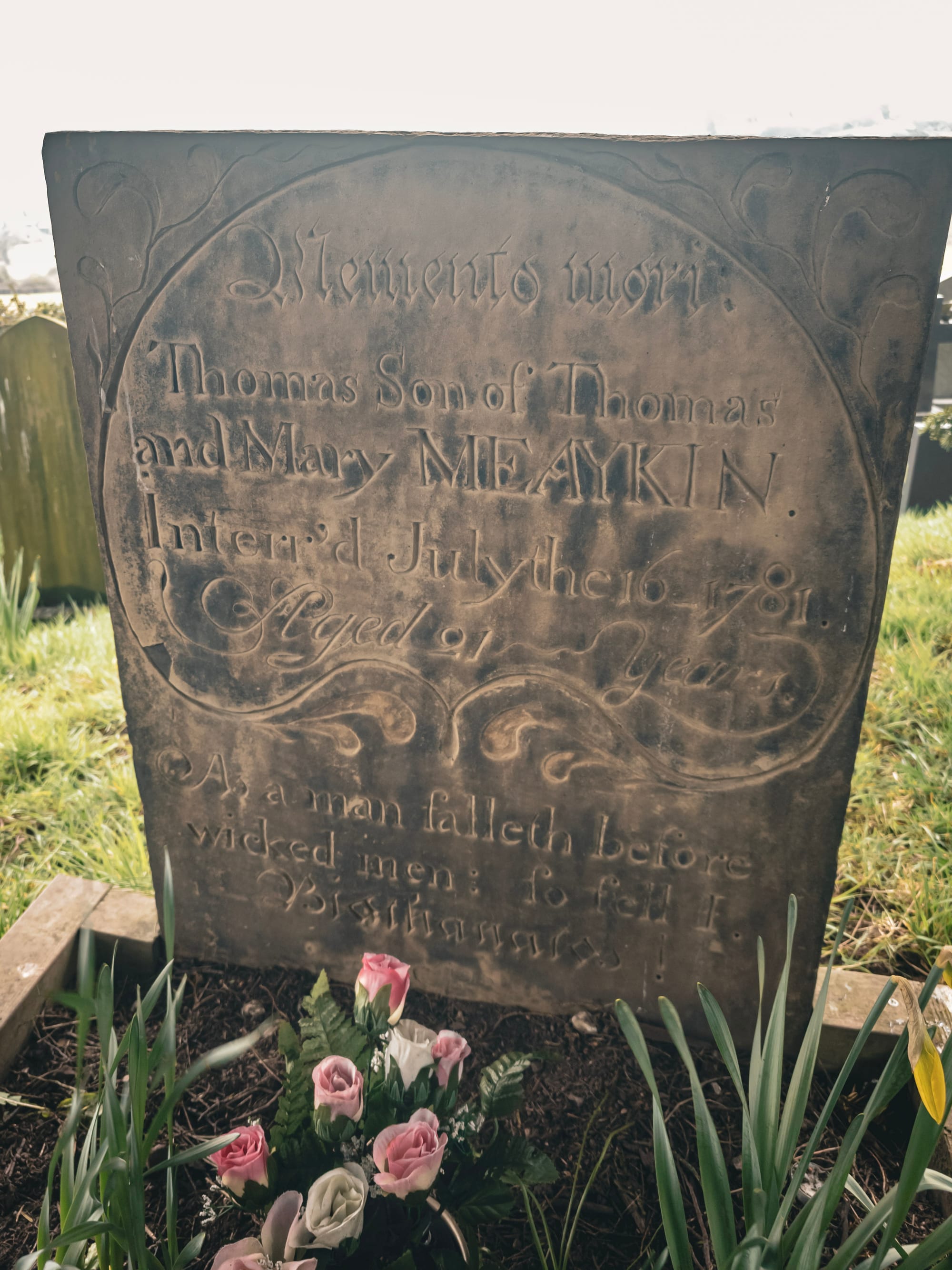A chilling local legend in North Staffordshire tells of Thomas Meakin, a young man who was allegedly buried alive in 1781. The story spans the quiet village of Rushton Spencer and the bustling canal town of Stone, involving an apothecary’s household, a mysterious illness, and a faithful pony that would not leave its master’s grave. Over two centuries later, Thomas Meakin’s grave can still be found at St Lawrence’s Church in Rushton Spencer – a site that holds clues to the truth behind the tale. This article examines the legend and the historical evidence, separating fact from fiction about “the boy who was buried twice.”
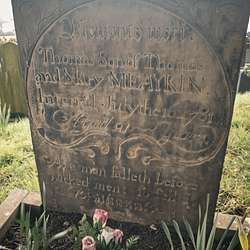
You can listen to this article here as a podcast
Watch the video here
Early Life in Rushton Spencer
Thomas Meakin (also recorded as Meaykin) was born around 1760 in Rushton Spencer. He was the son of Thomas and Mary Meakin, a local family in this rural part of North Staffordshire. Rushton Spencer at the time was a small farming community, historically a chapelry of Leek parish. Life here was typical of a country village in the 18th century, centred on agriculture and local trades. However, the wider region was beginning to offer new opportunities. Nearby Macclesfield in Cheshire had developed a flourishing button-making and silk industry by the mid-1700s, which created jobs for pedlars and mill workers. Ambitious young people in villages like Rushton Spencer might look to these trades or to service in wealthier households as a way to improve their prospects.

One notable feature of Rushton Spencer is its old church, St Lawrence’s, perched on a hilltop outside the village. This medieval chapel-of-ease (licensed for local worship since 1368) earned the nickname “Chapel in the Wilderness” for its solitary location amid fields and woods. Indeed, even by the late 18th century, the church stood about a mile from the main settlement – a picturesque yet isolated spot. The building itself was unique – originally timber-framed in the 13th or 14th century and later encased in stone in the late 1600s. Villagers like the Meakin family would have climbed the hill to St Lawrence’s for services, passing ancient yew trees and weathered gravestones. Little did they know that one day Thomas’s own grave would lie there under those yews, forever linked to a grim story.
A Groom’s Opportunity in Stone
Around 1780, when Thomas Meakin reached his late teens, he left his quiet village for the town of Stone, about 16 miles to the south. He had secured a position as a groom (stable-hand) in the service of a local apothecary (an early pharmacist). For Thomas, who was known to be good with horses, this job was a chance for a better life. Entering service in a gentleman’s household was considered a respectable step up for a young man of modest background in the 18th century.
The move also suggests that Thomas may have had connections in Stone – local research discovered a marriage of a Mary Meakin in Stone in 1742 and a burial of an Alice Meakin there in 1757, hinting that extended family from Rushton had settled in Stone decades earlier. Such family ties could well have helped Thomas find employment in the town.
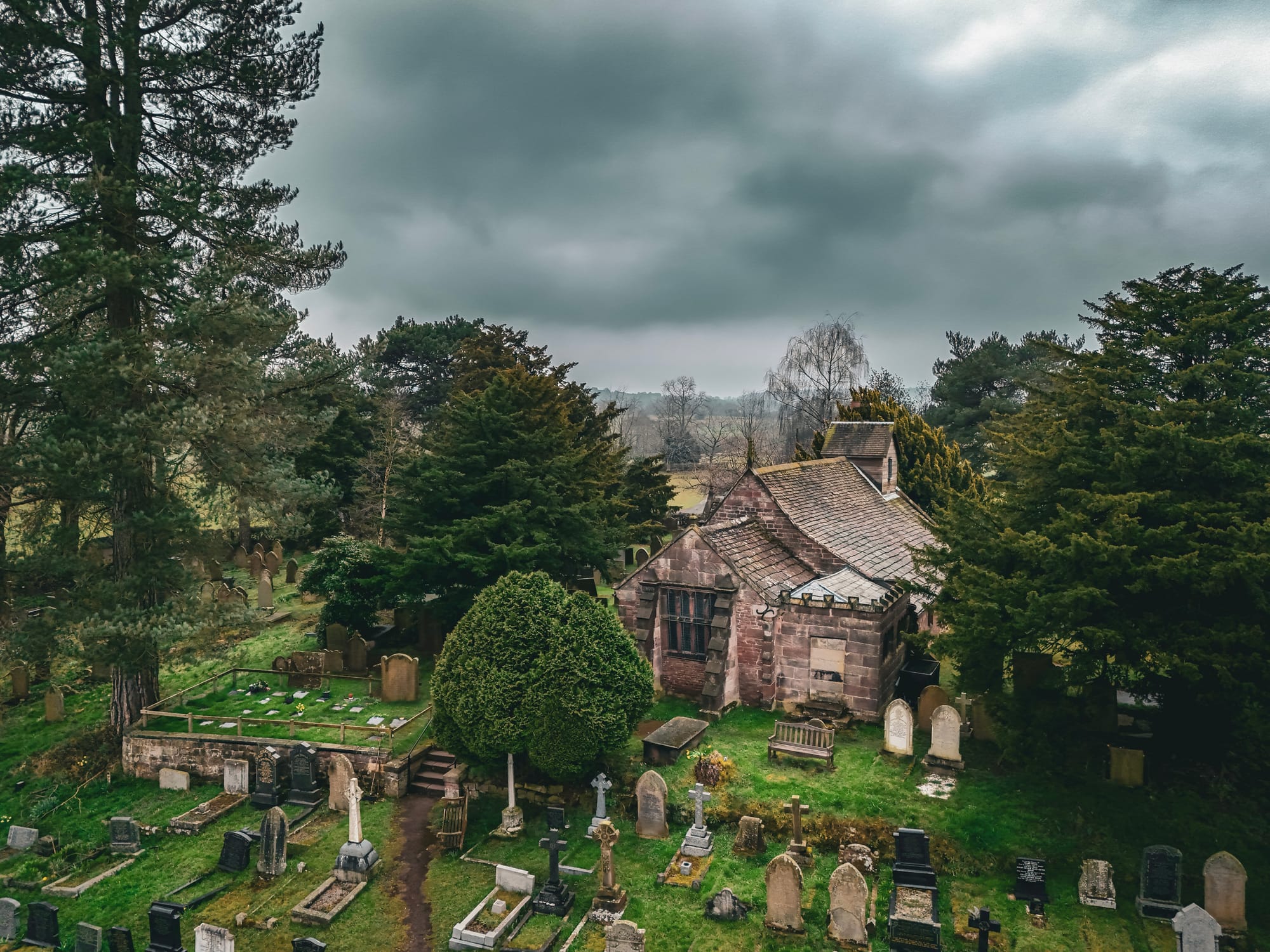
For Thomas, Stone must have felt like a bustling metropolis compared to Rushton Spencer’s hamlet. By 1801, Stone’s population was recorded at about 2,843 people – roughly twenty times the population of Rushton Spencer. The town sat on the recently opened Trent and Mersey Canal, which brought commerce and travellers, and it was known for its brewing industry and coaching inns. In the late 1700s, Stone’s economy thrived on beer brewing (a trade present since the Middle Ages), hospitality for canal boatmen and coach travellers, and market trade.
A young man like Thomas would have found Stone energetic and full of opportunity. Serving a wealthy apothecary – likely one of the most prominent figures in town – gave Thomas a respectable position, a place to live, and daily work caring for horses. By all accounts (and according to later legend), Thomas proved popular and high-spirited in Stone, adapting well to his new life.
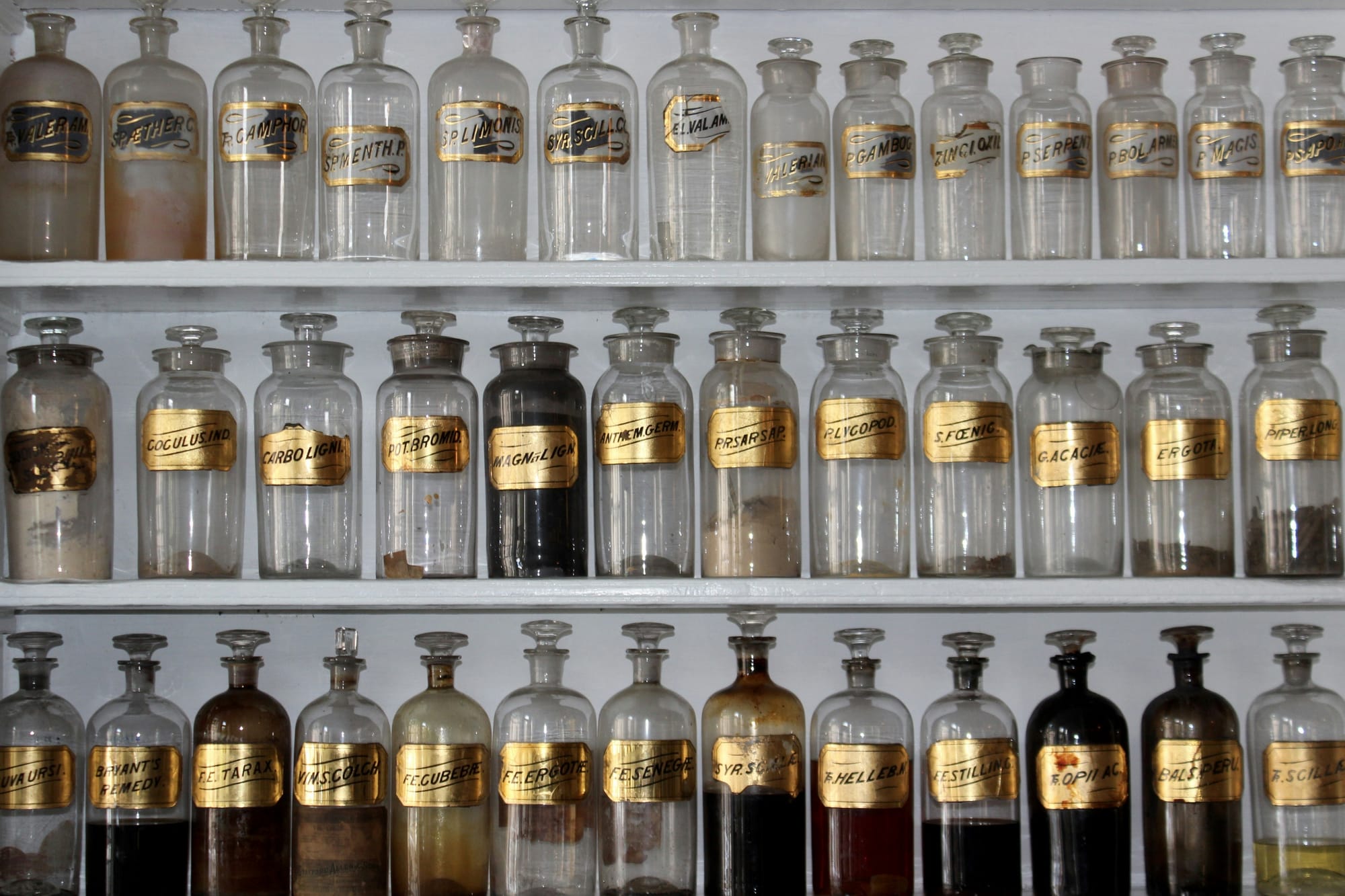
Apothecaries and Medicine in the 18th Century
To understand Thomas Meakin’s story, it is important to know what an apothecary was in the 1700s. In that era before modern regulations, apothecaries were medical generalists who filled the gap between physicians and surgeons. They compounded and sold medicines, often from a shop filled with colourful jars, and also provided basic medical advice and treatment to the public. An apothecary might treat everything from minor ailments to chronic illnesses among the middle and working classes.
In provincial towns like Stone, the apothecary was a key figure in the community – a trained chemist, healer, and businessman all in one. Apothecaries enjoyed significant social standing and could become quite prosperous through their trade. In fact, they were often considered gentlemen; many left substantial estates, and their wills have become a subject of historical study. Before the first Medical Register was published in 1779, there was little formal oversight of medical practice in England.
This meant apothecaries operated with a great deal of autonomy. They sometimes held contracts as dispensers for institutions like poorhouses (workhouses), where they effectively acted as resident doctors. With their knowledge of various compounds, an apothecary had access to all sorts of potions – some to heal, and some that could harm. Deadly substances like arsenic were readily obtainable and used in remedies (arsenic was a common ingredient in medicine for ailments such as syphilis).
It is no surprise, then, that later gossip pointed a finger at the apothecary in Thomas’s case – he was one of the few people with the means, knowledge, and authority to perpetrate a murder and cover it up.
Love and Loss in the Apothecary’s Household
According to the legend, while working in Stone, Thomas caught the eye of his master’s daughter. We do not know her name, and the historical record is silent on any romance, but local lore imagines a budding affection between the young groom and the apothecary’s daughter. One can easily picture the scenario: Thomas was around twenty years old, likely confident and capable, a newcomer with rustic charm, and she was a young lady in a comfortable household who enjoyed riding – their paths would have crossed in the stables.
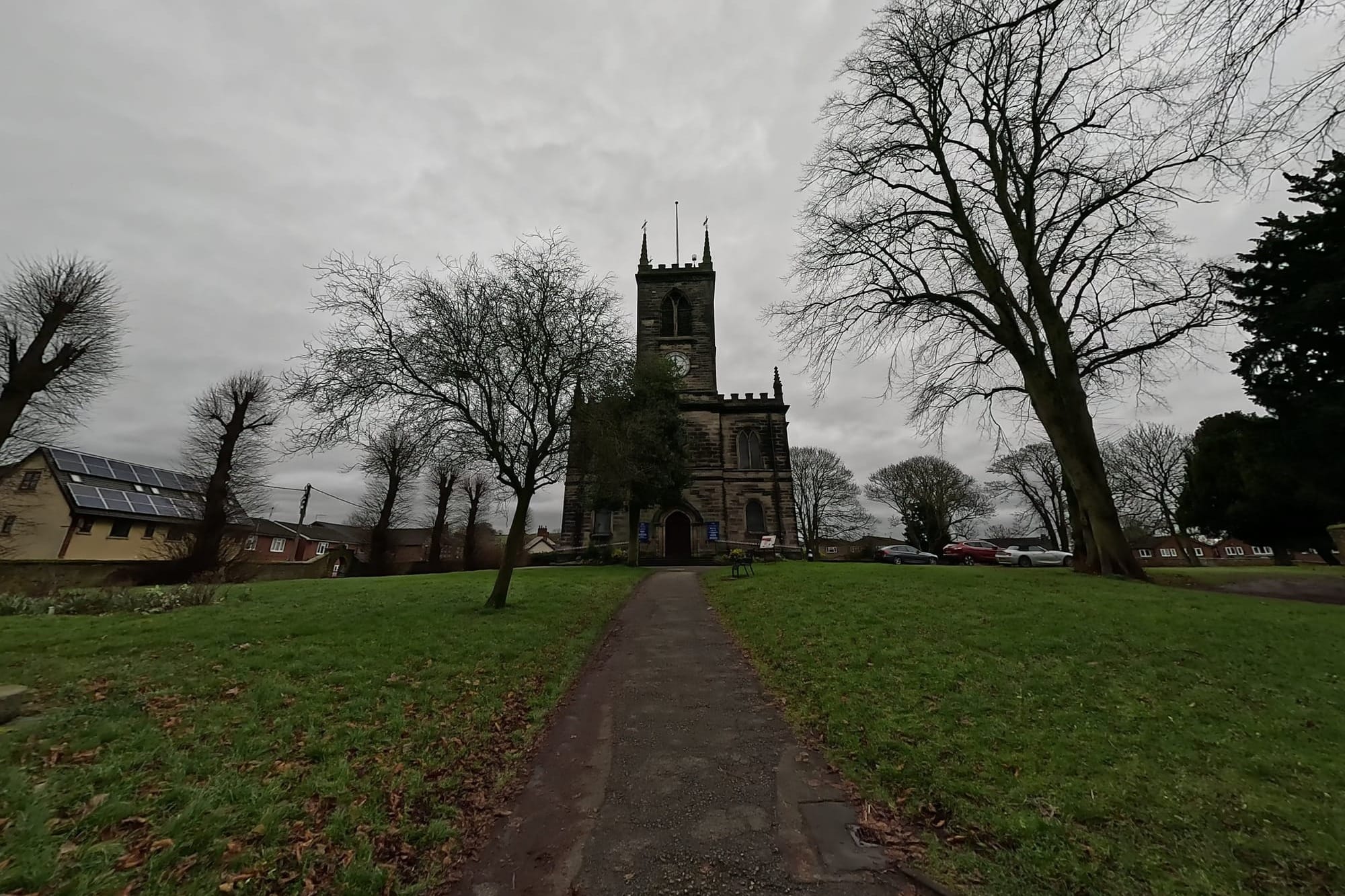
Whether or not Thomas returned her affections, the mere perception of a romance could have been enough to alarm a protective father. By the summer of 1781, tragedy struck. Thomas Meakin fell suddenly ill and died, aged just 21. He was buried on 16 July 1781 at St Michael’s Church in Stone. The burial register for St Michael’s duly records Thomas’s interment on that date.
In an age before advanced diagnostics, his death may have been attributed to any number of causes – fever, a seizure, or another acute illness. Notably, there was no coroner’s inquest into the death. At that time, inquests were not automatic unless there were clear signs of foul play or the deceased was unknown. In Thomas’s case, his employer the apothecary would have been the very person attending him in his final hours and likely the one to certify the death. As a respected local practitioner, the apothecary’s word would have carried weight, and there may have appeared to be nothing amiss.
To the townsfolk of Stone, the sad demise of a young servant could have been seen as a natural, if unfortunate, event. Yet whispers must have started almost immediately. Perhaps some noticed that Thomas’s death was alarmingly sudden. Perhaps servants in the household exchanged uneasy glances at how quickly the burial was carried out. The apothecary, if he did disapprove of Thomas’s closeness with his daughter, had a clear motive to remove the young man from the picture. These suspicions were the seeds of what came next – a series of strange events that would make Thomas Meakin’s fate the stuff of legend.

A Pony’s Vigil and a Shocking Discovery
The legend’s most poignant detail is the behaviour of Thomas’s pony. It is said that the loyal animal repeatedly found its way to Thomas’s grave in Stone and began pawing at the earth. Time and again, the horse (or pony) returned at night to the burial spot, as if sensing its master was not at rest. This eerie occurrence sparked alarm among Thomas’s friends and onlookers in Stone.
A year passed, and the rumours did not die down. Finally, nearly twelve months after his funeral, Thomas’s friends (or, according to some versions, his family) decided to take action. They petitioned to have his grave opened to see if something was amiss. In July 1782, Thomas Meakin’s coffin was exhumed from the churchyard of St Michael’s, Stone. What the exhumation revealed confirmed everyone’s worst fears.
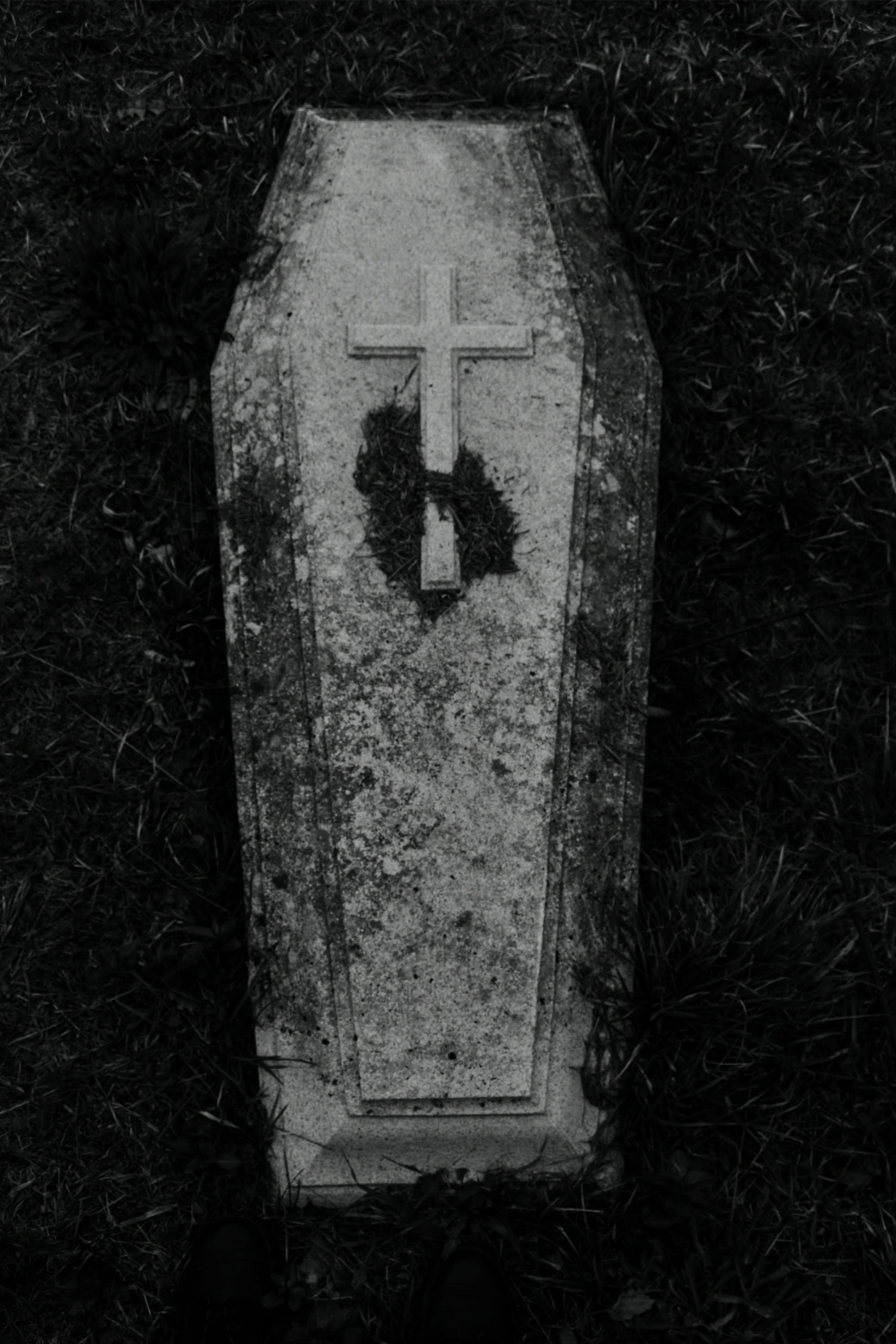
Inside the coffin, Thomas’s body was found face-down and contorted. Scratch marks were reportedly visible on the inside of the coffin lid. These signs indicated that Thomas had regained consciousness after burial and desperately tried to claw his way out. In other words, he had been buried alive. One can only imagine the horror of that moment for those who opened the coffin – a realisation that their friend did not die when all assumed he had.
The likely explanation was that Thomas had been given (deliberately or by accident) a powerful narcotic or poison that induced a death-like coma. In the 18th century, there were no reliable methods to tell if a person in a deep coma was truly dead. As the tale later circulated, people drew parallels to the story of Romeo and Juliet, where Juliet takes an elixir that mimics death. In Thomas’s case, if a toxic substance was used, arsenic is often suggested – arsenic trioxide is tasteless and was a known poison at the time, and a dose might render a victim immobile and insensible without immediate death.
The apothecary would have had such poisons at hand and the knowledge to administer them. Crucially, he also would have been trusted to declare Thomas dead without arousing suspicion. Following the exhumation, Thomas’s remains were not reburied in Stone. His family intervened to reclaim their son. The parish register of Stone contains a terse but telling entry: “Thomas Meakin of Stone was buried July 16th 1781 and was removed thence and buried at Rushton Spencer July 17th 1782.”
This one-line official record confirms that Thomas’s body was indeed exhumed and reinterred in Rushton Spencer a year after his first burial. It gives no further explanation – none was legally required – but the timing aligns perfectly with the legend’s events. Interestingly, there was no public scandal recorded in the local press or court records. The absence of any surviving newspaper articles or trial documents suggests that whatever happened was handled quietly.
No charges were ever brought against the apothecary or anyone else in relation to Thomas’s death. Perhaps the community, lacking hard proof of a crime and facing the word of an esteemed gentleman, chose to let the matter drop. In Georgian England, without eyewitnesses or advanced forensics, a cause of death like poisoning would have been extremely hard to prove. Thus, the tragedy concluded with an uneasy silence – officially at least.
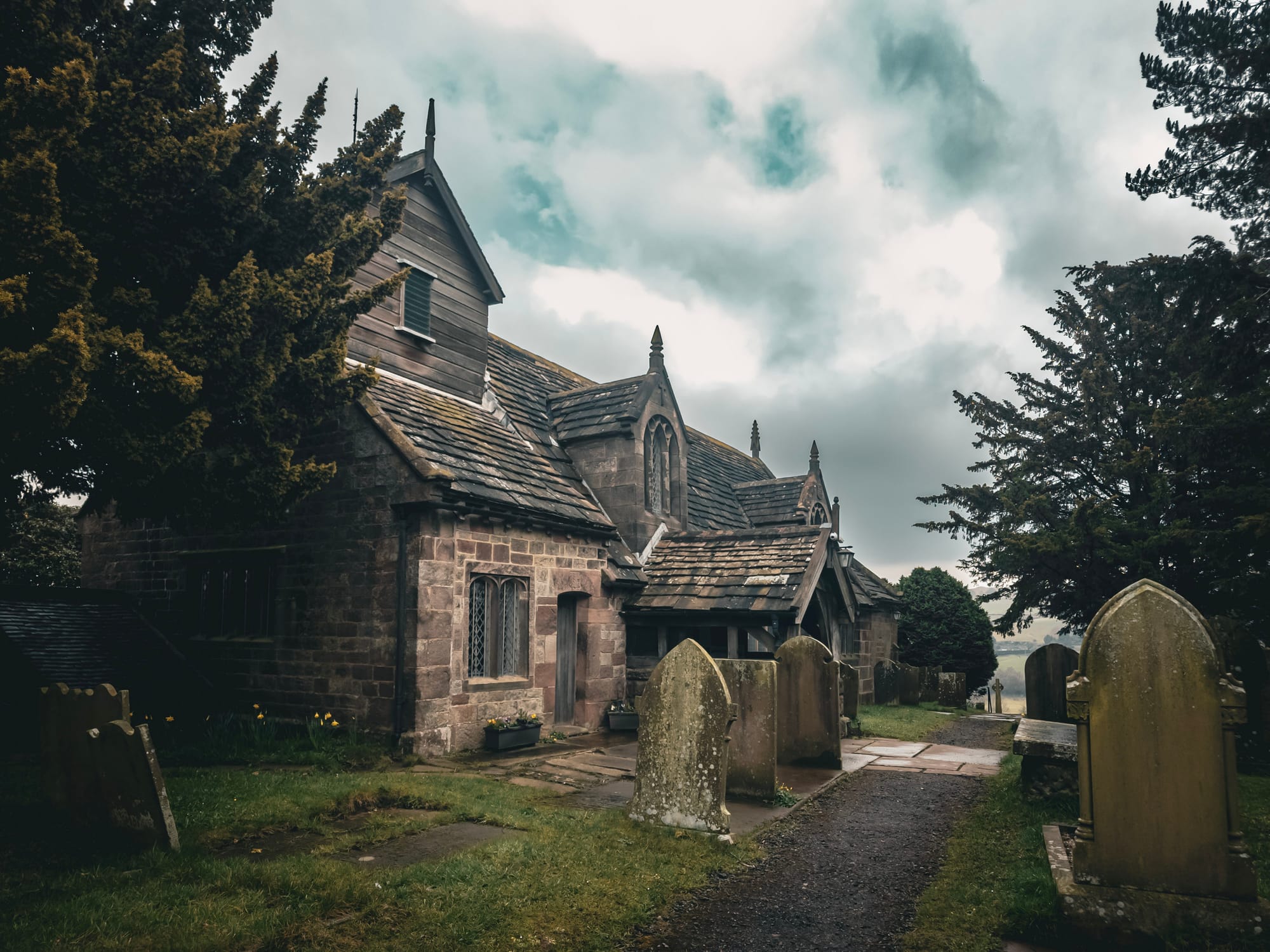
The Second Burial at Rushton Spencer
Thomas’s grieving parents saw to it that he was finally laid to rest in home soil. On 17 July 1782, one year and a day after he was first buried, Thomas Meakin was interred again – this time in St Lawrence’s churchyard, Rushton Spencer. The little hilltop church that he knew in life became his permanent resting place in death.
Local lore holds that the villagers took precautions with this reburial, given the disturbing circumstances. It was believed in folklore that if someone had died an unnatural or restless death, burying them in an unusual orientation could prevent their spirit from wandering. In Christian tradition, most graves (and the bodies within) are oriented eastward, towards the sunrise (symbolic of resurrection). Thomas’s grave, however, was deliberately set facing west – the opposite direction.
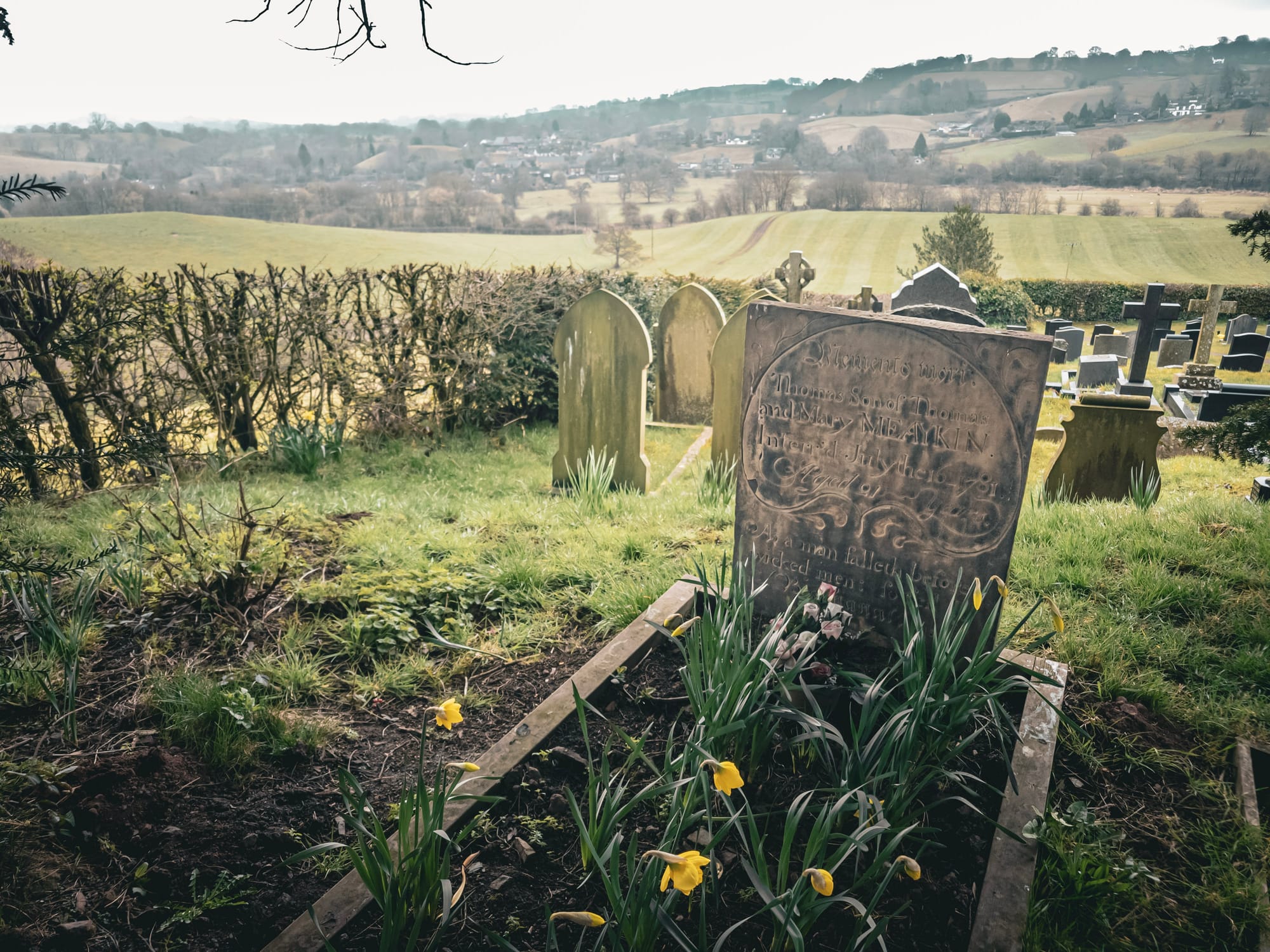
This west-facing orientation was highly unusual; in fact, Thomas’s headstone is the only one in St Lawrence’s churchyard that faces west instead of east. By burying him “backwards,” so to speak, the community may have hoped to lay his troubled soul to rest and thwart any ghostly unrest. It was a superstitious gesture born of genuine fear and sorrow.
Thomas’s new grave was placed in the north part of the churchyard, beneath the shade of ancient yew trees. In many old English churchyards, the north side was traditionally the least desirable spot (often reserved for unbaptised infants or outsiders) because it lay in the shadow of the church. Whether by necessity or design, Thomas’s reburial in the north corner again underscores that his death was viewed as something out of the ordinary.
Nevertheless, one can imagine that the reinterment was done with care and reverence. The “Chapel in the Wilderness” would have been quiet as a small funeral service was held for Thomas in 1782. His family and friends finally had the chance to say proper goodbyes, and Thomas was returned to the green hills of his boyhood, far from the unhappy events in Stone.

A Gravestone’s Tale: Memento Mori and “Bia Thanatos”
Despite the eerie legend surrounding it, Thomas Meakin’s grave physically exists and can be visited to this day in Rushton Spencer. The headstone, now over 240 years old, is weathered but the inscription can still be discerned. It bears a carved border and at the very top the words Memento Mori.
This Latin phrase, popular on 18th-century gravestones, means “remember that you must die” – a reminder of mortality to all who pass by. Below that, the stone is inscribed with Thomas’s details: “Thomas son of Thomas and Mary Meaykin, Interred July 16th 1781, Aged 21 years.” The use of the surname spelling “Meaykin” reflects an older or regional variation, but it is undoubtedly our Thomas. The inscription confirms his age and the date of his initial burial in Stone.
What truly sets the epitaph apart are the next lines. The stone reads: “As a man falleth before wicked men, so fell I.” This line is a poignant statement, essentially accusing unnamed “wicked men” of causing Thomas’s downfall. It echoes a biblical reference (similar wording is found in 2 Samuel 3:34, where King David laments a murder by saying “As a man falleth before wicked men, so fellest thou”).
By choosing this epitaph, Thomas’s family or friends made a bold suggestion: that he was an innocent victim who met his end through foul play – a direct allusion to the belief that the apothecary murdered him. The final flourish on the gravestone is the phrase Bia Thanatos. These two words are Greek, translating to “violent death” or “death by force.”
It is highly unusual to see Greek on a village headstone. Bia Thanatos (βίᾳ θάνατος) literally means “violent death” – again underscoring that Thomas’s demise was unnatural. Combined with Memento Mori at the top, the Latin and Greek together impart a stark warning and story: remember death, for it may come by violence, as it did to this young man.
In an era when most tombstones simply list names and dates with perhaps a comforting Bible verse, the Meakin epitaph stands out as a deliberate indictment and a narrative in itself. It immortalises the legend on stone: anyone reading it learns that Thomas died at 21 and that his death was not a simple act of God. It was something much darker.
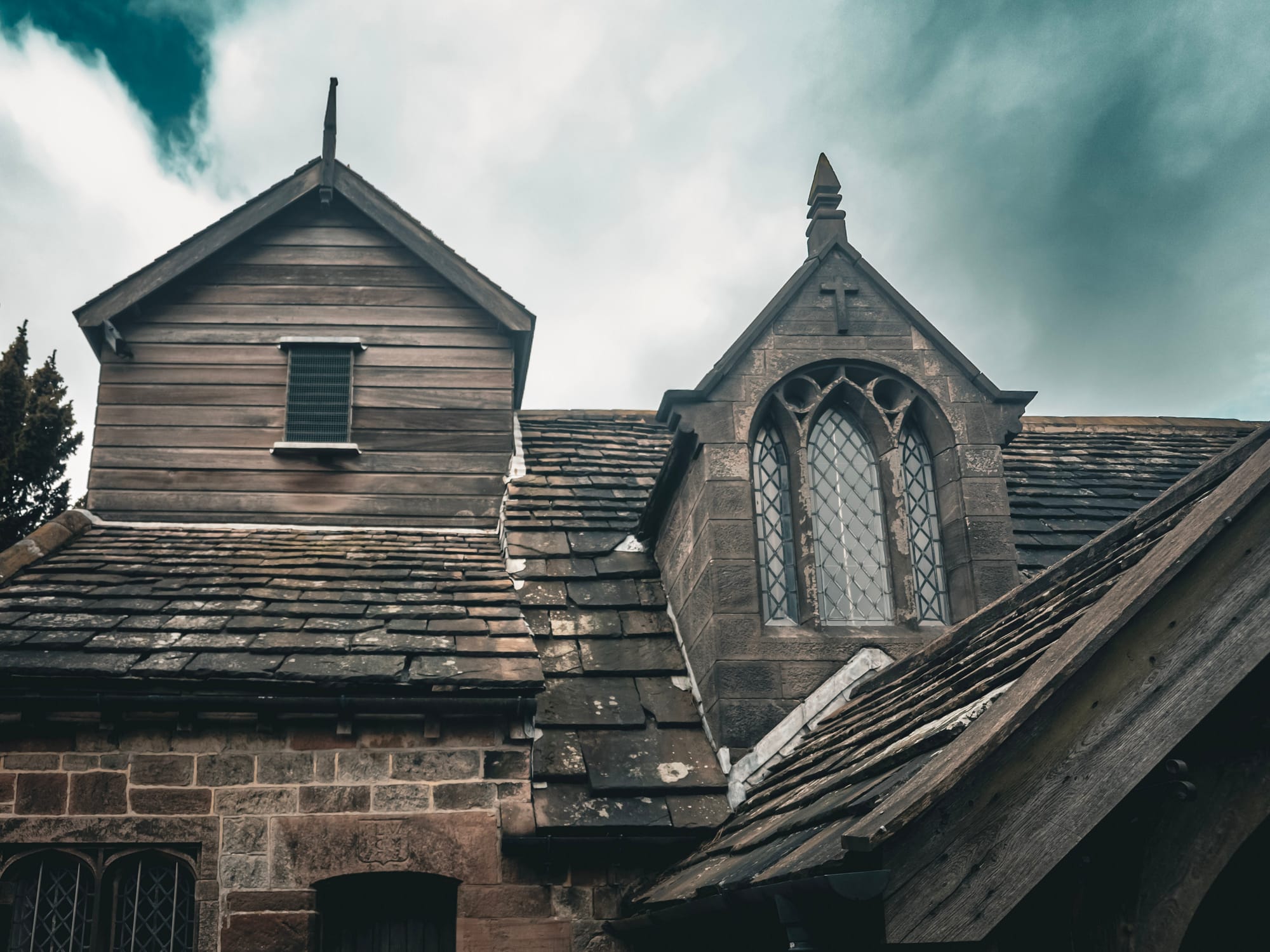
“Chapel in the Wilderness”: St Lawrence’s Church
St Lawrence’s Church in Rushton Spencer, where Thomas lies, deserves a moment of attention not only for its scenic beauty but also for its long history. As mentioned, the church had the nickname “Chapel in the Wilderness” since at least the 17th century, due to its lonely position on a hilltop. Even in modern times, visitors describe the trek to it as a hike into solitude – one writer noted that after a considerable walk, the little 13th-century timber-framed church “definitely earns its epithet of ‘The Chapel in the Wilderness’.”
The site offers sweeping views of the Staffordshire countryside. One can stand by the churchyard gate and gaze down at the village of Rushton Spencer and across to the high ridge of The Cloud on the Cheshire border. It is a tranquil spot, removed from civilisation – quite an atmospheric setting for such a morbid legend.
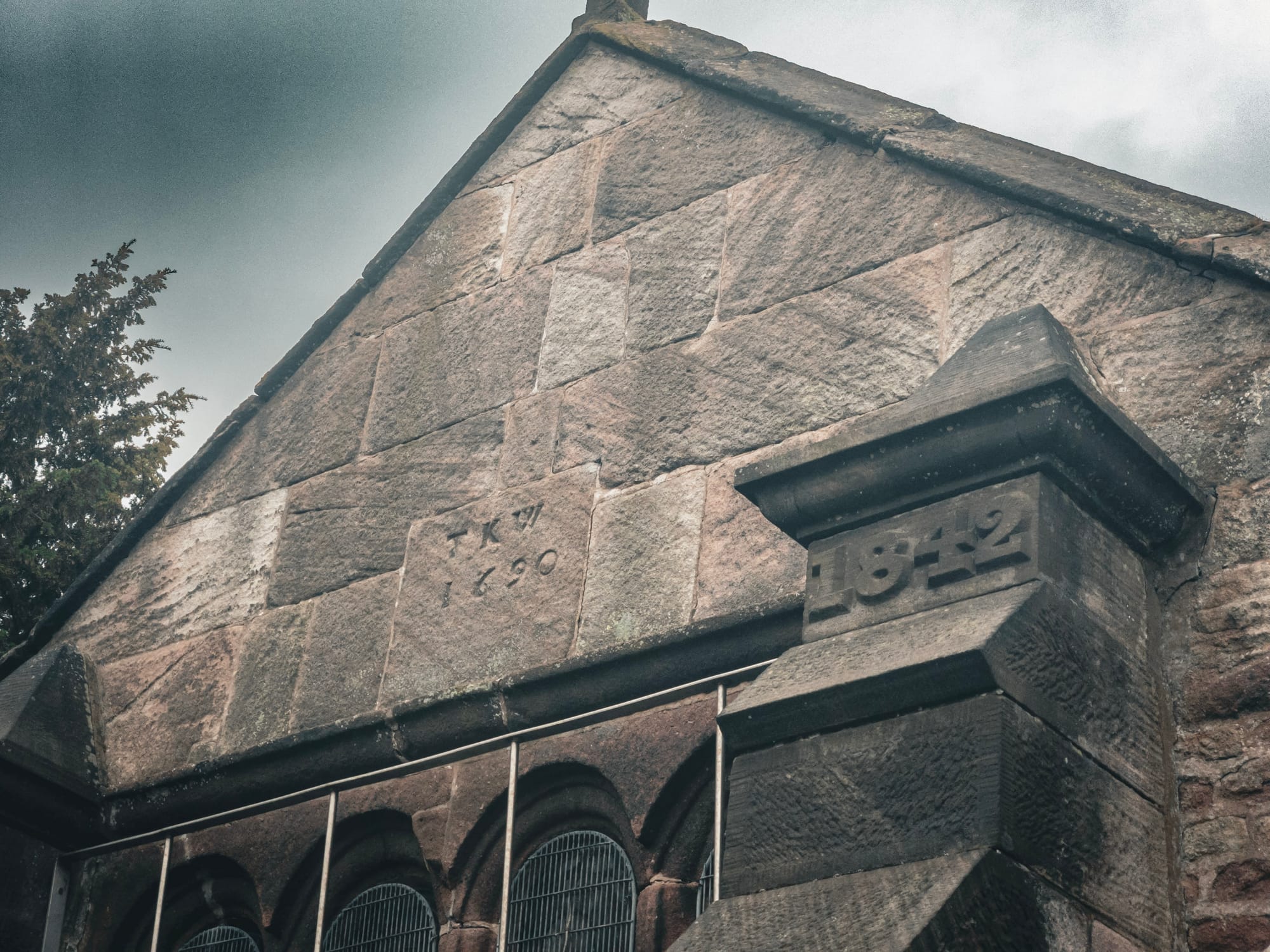
Architecturally, St Lawrence’s is remarkable. It is one of very few timber-framed churches in Staffordshire. The core of the structure (the nave) dates to the 1200s, built with large oak beams in a cruck-frame style. In the late 1600s, this medieval wooden church was encased in sandstone and brick – the east window bears the date 1690, and the south doorway the date 1713, marking phases of rebuilding.
Essentially, the old “wilderness chapel” got a new shell, but much of the original wood framework survived inside the walls. A wooden bell turret clad in weatherboards sits atop the roof, giving the church a quaint, rustic appearance. Inside, there are Jacobean (17th-century) wood furnishings, like an old pulpit and a “squire’s pew” reserved for local gentry.

The churchyard itself has gravestones ranging back many centuries, though time and weather have knocked most of them askew or blanketed them in moss. Local historians note that the church’s location was so inconvenient that in the 19th century the main population of Rushton Spencer shifted closer to a new road, leaving St Lawrence’s even more isolated. Yet, this isolation preserved its antique character. Today, it is a Grade II* listed building for its unique heritage.
For those interested in Thomas Meakin’s tale, a visit to St Lawrence’s offers not just a hunt for his grave, but also a step back in time.

Who Was the Apothecary? Unmasking a Suspect
The legend of Thomas Meakin inevitably points to the apothecary in Stone as the villain of the piece – a man who had both motive and means to poison the young groom. But is there any historical record of this apothecary? Researchers have dug into archives, and a likely suspect has emerged: a gentleman by the name of John Dickenson (or Dickinson, with spelling variations).
While we do not have a contemporary 1781 document naming the apothecary outright, later records provide clues. The William Salt Library in Staffordshire holds a reference to an apothecary named Dickenson operating in Stone in the year 1790. This establishes that a person by that surname was practising in Stone within a decade of Thomas’s death – quite possibly the same man, if he was middle-aged in the 1780s.
More telling is an entry from the Staffordshire Advertiser newspaper nearly twenty years after the incident. In an edition dated 13 September 1800, the paper reports an inquest at Stone, “taken before J. Dekenson, gent., on the body of John Robinson, a boatman…” The boatman had died in his cabin, and the verdict was natural causes (“died by visitation of God”).
The key detail here is the official: J. Dekenson, gent. It appears that Mr “Dekenson” was acting in a quasi-coroner capacity for the inquest. The title “gent.” (gentleman) implies he was a man of local importance but not an ordained magistrate or physician. In small communities, it was not uncommon for a respected professional to oversee inquests if a coroner was not available. An apothecary would fit that role perfectly as someone with medical knowledge but not formally a doctor.
Historians believe that “Dekenson” is simply a variant spelling of Dickenson. Spelling was not fully standardised at the time, and newspaper typesetters often wrote names by ear. The coincidence of a Dickenson in 1790 and a “J. Dekenson” in 1800, both in Stone, strongly suggests this is the same individual – and likely the apothecary who employed Thomas Meakin.
If John Dickenson was indeed the apothecary in question, what became of him? By 1800, the newspaper describes him as a “gent,” which could mean he was semi-retired or at least a man of leisure by then, called upon for civic duties like inquests. He was evidently never publicly accused or punished for anything related to Thomas. In fact, no contemporary source from the 1780s explicitly links Dickenson to the Meakin affair – which is not surprising if the matter was hushed up.

It is intriguing to note that Reverend Stebbing Shaw, a prominent historian of Staffordshire (and a native of Stone), published his History and Antiquities of Staffordshire in 1802 with no mention of Thomas Meakin’s bizarre death. Shaw, born in 1762, was only a couple of years younger than Thomas and lived in Stone in his youth, yet either he never heard of the incident or deemed it too sensitive or scurrilous to include. The omission might suggest that by the early 19th century the story was deliberately kept quiet in “polite society,” even if it survived in local folklore.
The apothecary Dickenson, if guilty, had effectively got away with the perfect crime: he had the knowledge to administer a life-threatening potion and the authority to declare the victim dead, thereby avoiding suspicion at the time. Of course, without direct evidence, we cannot conclusively convict Mr Dickenson. What we do have is a convergence of circumstantial evidence and legend. The motive (a father’s disapproval), the method (poison inducing a deathlike state), and the opportunity (the power to certify death and discourage investigation) all point to the apothecary.
Villagers certainly believed Thomas had been wronged – his epitaph calls out “wicked men” – and in their eyes, justice was never served. John Dickenson appears in records as late as 1800 still respected in Stone, which would likely not have been the case had he been publicly suspected of murder. In the end, the apothecary lived out his days under no legal cloud, while Thomas Meakin’s fate became an enduring cautionary tale whispered through generations.

Economic and Social Context of the 1780s
Stepping back from the individuals involved, it is useful to frame the Thomas Meakin saga in the context of the times – the early 1780s in England, and in Staffordshire in particular. This was a period of transition in many ways. The Industrial Revolution was in its early stages; factories and canals were reshaping the landscape. Yet traditional structures of society still held sway, especially in rural areas.
Rushton Spencer in the 1780s was a backwater in the Staffordshire Moorlands. It had no large industry; farming was the mainstay. However, its proximity to the Cheshire border meant influences from that county’s silk and button trade trickled in. Many families around the Leek and Macclesfield area engaged in cottage industries like sewing buttons or weaving silk ribbons to supplement farm income. There was also a well-known button-making trade in nearby Macclesfield, employing itinerant pedlars who travelled village to village.
Such economic activities gave young men like Thomas alternatives to ploughing fields. One could venture to a town or take up a trade and not be entirely stepping into the unknown. Stone, by contrast, was a thriving coaching stop and market centre. In the 1770s, the Trent and Mersey Canal opened (Stone’s section was completed by 1771), bringing heavy cargo barges through the town’s canal wharves. This boosted Stone’s commerce significantly, as goods like pottery from Stoke-on-Trent and salt from Cheshire passed through.
Stone also sat on the main road from London to the North West, meaning stagecoaches and wagons passed daily. The town had several inns, stables, blacksmiths, and of course breweries – John Joule’s brewery was established in Stone around this era (Joule began brewing in 1780), continuing the town’s ale-brewing tradition. So, in the early 1780s, Stone was humming with economic activity; employment could be found in hospitality, transport, brewing, and crafts.
Socially, the class divide was pronounced. A country boy like Thomas coming into a genteel household would know his place as a servant, but also see firsthand the lifestyle of the higher classes. The apothecary would likely have mingled with Stone’s elite – perhaps dining with the local gentry and attending assemblies – while his servants toiled behind the scenes. Any notion of a romance between a servant and a master’s daughter would have been scandalous. Marrying “beneath one’s station” was virtually unthinkable in that era for a professional’s daughter.
The story of Thomas and the apothecary’s daughter fits into a classic 18th-century trope: the ill-fated cross-class romance, often ending in tragedy (a theme found in many ballads and literature of the time).
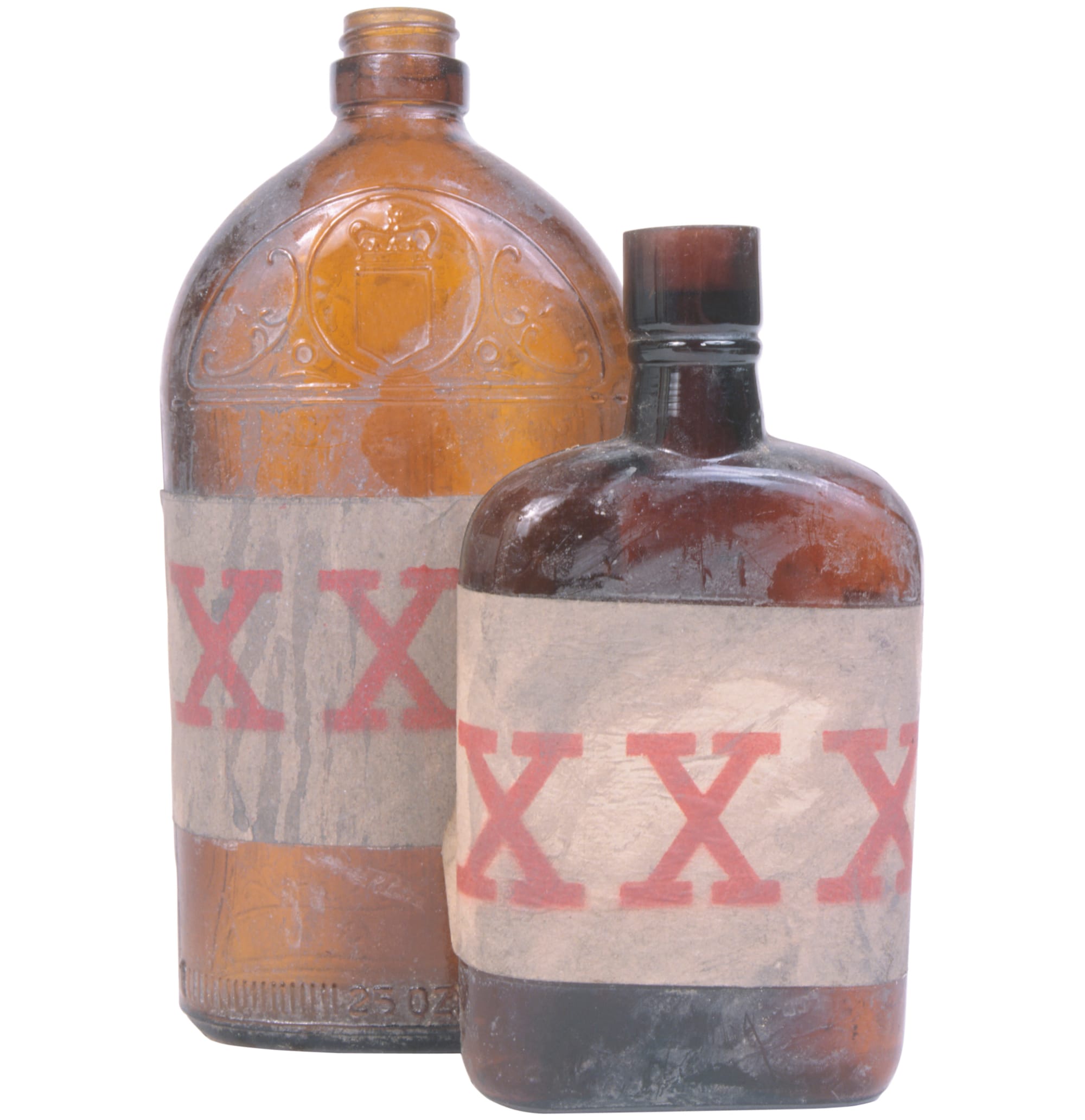
Medicine in the 1780s was also in a state of flux. Scientific understanding of poisons, for instance, lagged behind their availability. It was not until the 19th century that reliable tests for toxins like arsenic were developed. That meant if someone wanted to commit murder by poisoning in 1781, it was disturbingly easy to do so and get away with it – especially if you were the local medical authority.
Cases of accidental live burial were also a real fear in that era. There are recorded instances of people being mistakenly buried while in comas or suffering from diseases like cholera that could mimic death. This fear gave rise to designs for “safety coffins” in the 18th and 19th centuries, equipped with bells or flags to signal if a person awoke underground.
Thomas’s story taps into that very real contemporary anxiety about being buried alive. It is one reason the tale spread and persisted: it was not viewed as impossible. People knew it could happen.
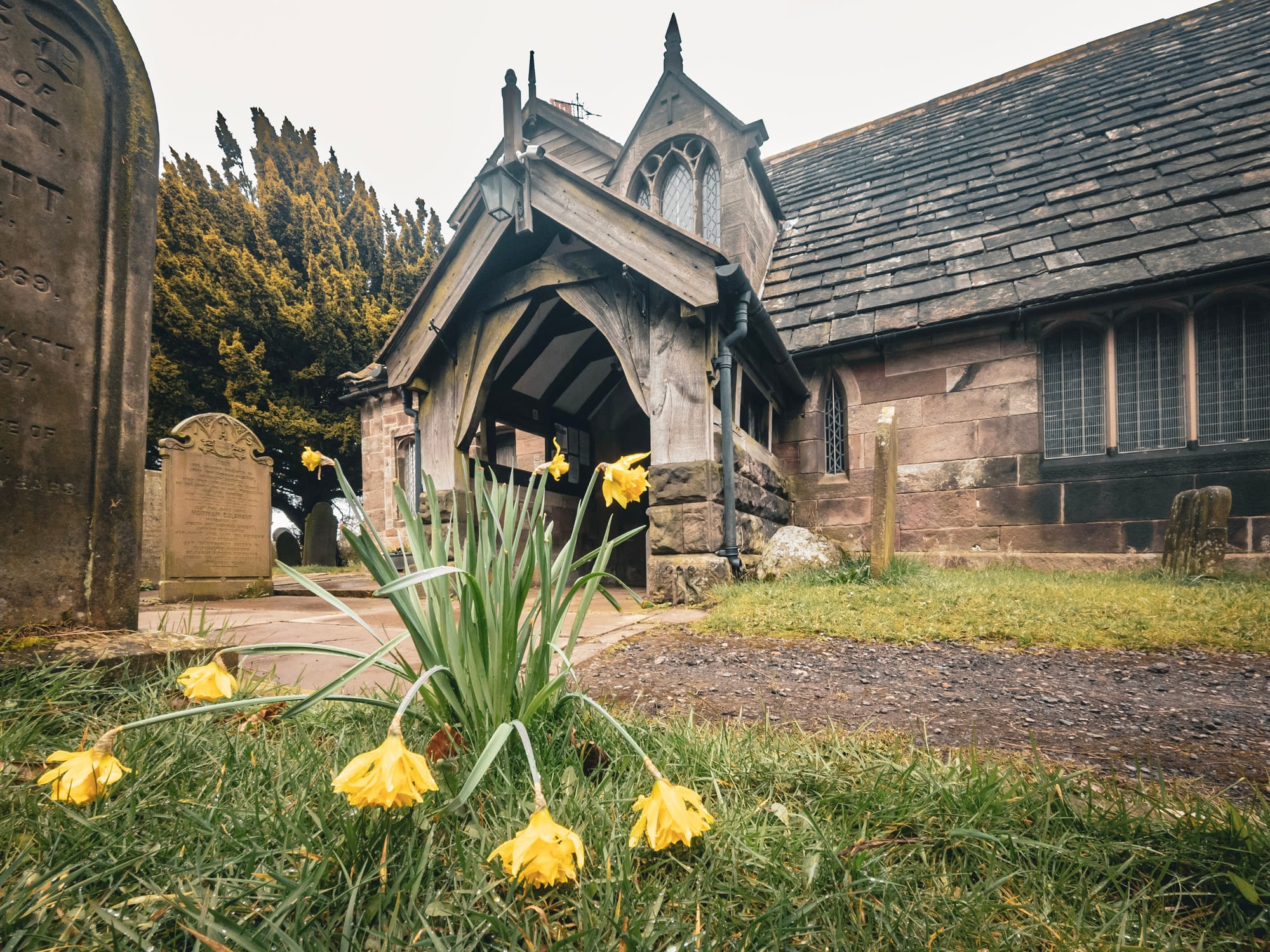
Legacy of the Legend
Today, the tale of Thomas Meakin stands at that hazy intersection of history and folklore. On one hand, the core events are documented: Thomas Meakin existed, he died and was buried in 1781, and a year later he was dug up and reburied in Rushton Spencer – the parish registers verify this much. On the other hand, the cause of his death and the dramatic embellishments (the pony, the romance) come down to us through oral tradition and local storytellers rather than official records.
As one modern historian aptly put it, “Thomas Meakin has become part-man, part-legend.” The facts that do survive leave tantalising gaps filled in by conjecture. Was he truly poisoned, or could it have been a natural cataleptic fit? Who exactly orchestrated the exhumation – friends or family? What became of the apothecary’s daughter? The legend invites us to ponder these questions, but the answers remain elusive.
What is clear is that the community in Rushton Spencer never forgot Thomas’s fate. By inscribing their suspicions in stone on his grave, they ensured that future generations would ask, “What happened to this young man?” In that sense, Thomas Meakin’s grave is not just a memorial but a piece of storytelling – an 18th-century “cold case” hinted at in a few carved lines and phrases for those curious enough to decipher them.
Local history enthusiasts continue to be drawn to the story. It has been recounted in blogs, walking guides, and even on social media, often under headlines like “Buried Alive!” or “Staffordshire’s most infamous burial.” And indeed, standing in the secluded churchyard of St Lawrence’s, with the wind whispering through yew branches, it is hard not to feel a shiver when you finally find that lone west-facing headstone.
In the broader scope of Staffordshire history, Thomas’s legend is a reminder of the fragility of life in past times – and the imperfections of historical record. How many other curious incidents went unreported or were quietly managed in small communities? The Meakin story survived only because it was so dramatic that people retold it, and because a physical monument anchors it in collective memory.
It also serves as a cautionary tale about power and justice: a warning that those in privileged positions (like an 18th-century apothecary) could, in effect, get away with murder. As of today, Thomas Meakin rests in peace atop the gentle hill in Rushton Spencer. The “ghost” that people once feared has long since faded into legend.
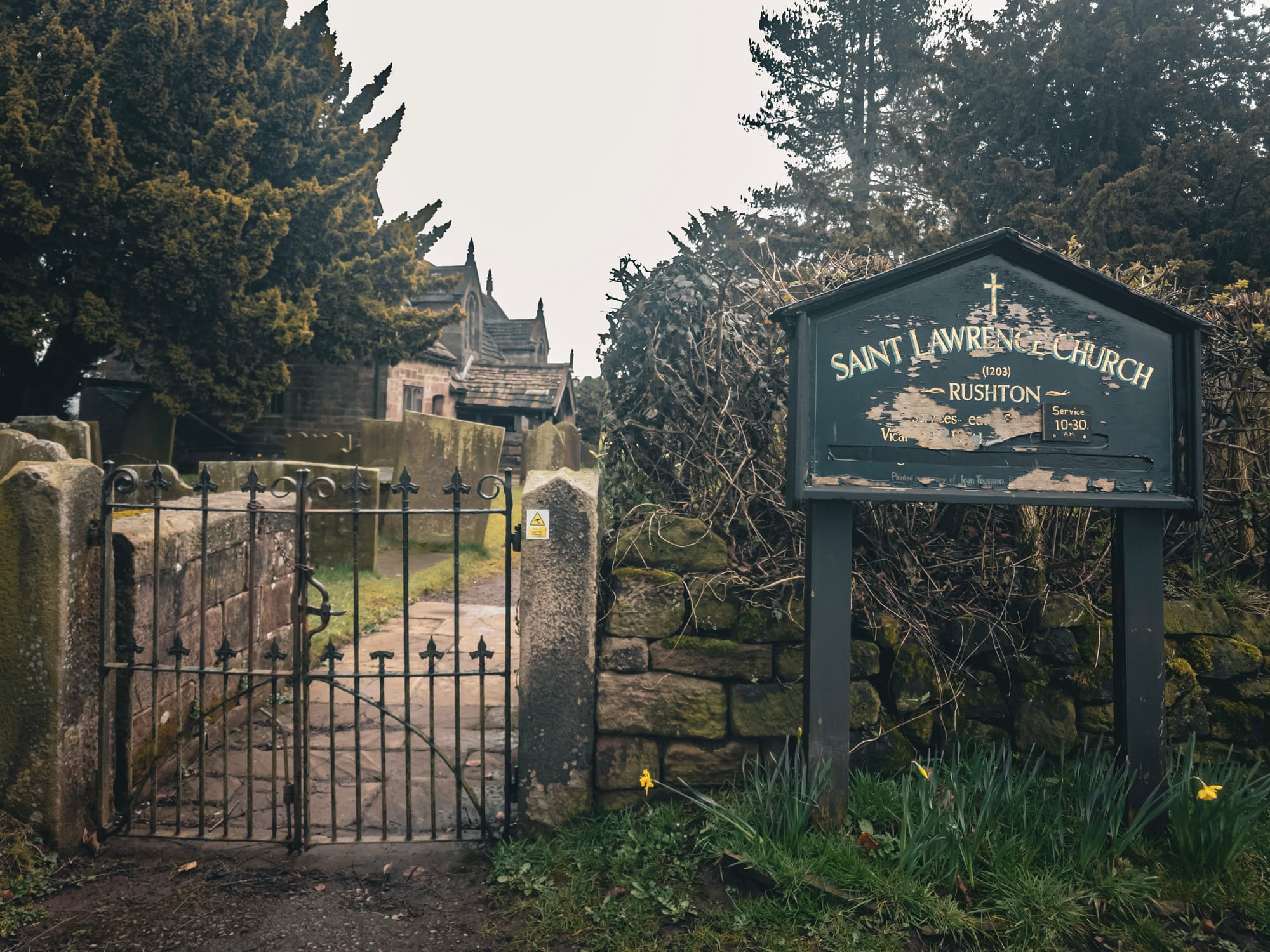
Visitors to St Lawrence’s Church can pay respects at his graveside and reflect on a life cut short. Whether one believes he truly was buried alive by a villain, or that it was a tragic accident, the emotional truth of the story endures. It is a story of love, jealousy, untimely death, and the devotion of friends (and a pony) who would not let the truth stay buried.
In the annals of local lore, Thomas Meakin’s tale remains one of North Staffordshire’s most haunting legends – a young man who died twice, and whose story refuses to die.
